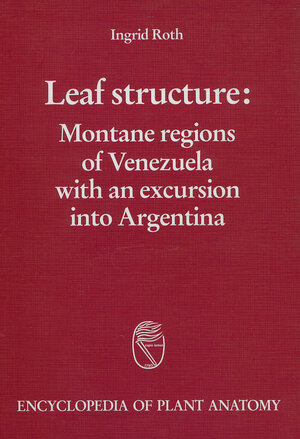
×
![Buchcover ISBN 9783443140229]()
Handbuch der Pflanzenanatomie. Encyclopedia of plant anatomy. Traité d'anatomie végétale / Leaf Structure: Montane regions of Venezuela with an excursion into Argentinia
von Ingrid Roth, herausgegeben von H J Braun, S Carlquist, P Ozenda und I RothThe present monograph treats the leaf structure of plants in a variety of montane habitats. It establishes and discusses relationships between leaf structure and environmental stresses, such as strong isolation, frost and drought. It is mainly based on original observations and studies of plants in distinct mountainous regions of Venezuela and Argentina by the author, her students and colleagues. The studied plants apply a wide range of stategies to adapt themselves to the environmental conditions of their habitat: they use very different structural characteristics, such as reduction of the surface/volume ratio, rolled leaves, crypts, water-storing tissues, thick and cutinized upper epidermis cells or tannic substances with a protective function against UV radiation. A colourless parenchyma may be the consequence of chlorophyll decomposition by excessive isolation. Leathery leaf consistency found in many species studied is due to a variety of anatomical structures. In Senecio rex, the extremely thick walls of the palisade cell cause this texture. Sun leaves were observed in most of the species. Leaf consistency and leaf fall are related to one another. The most xeromorphic adaptions are found in Espeletia at elevations between 2000 and 4000 m a. s. l. Besides anatomaical observations also physiological and ecophysiological aspects are discussed. Many andine species are useful. Krameria lappacea was almost extinct because of its tannin content. Medical uses of the paramo plants Espeletia and Carramboa are described.


